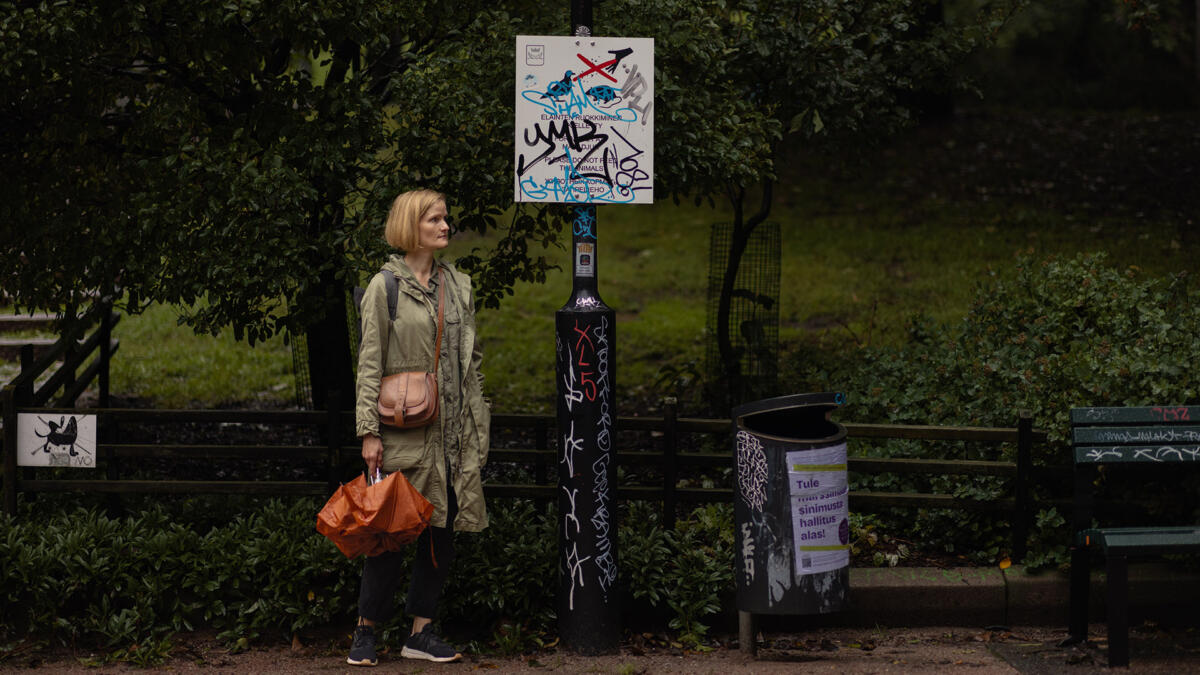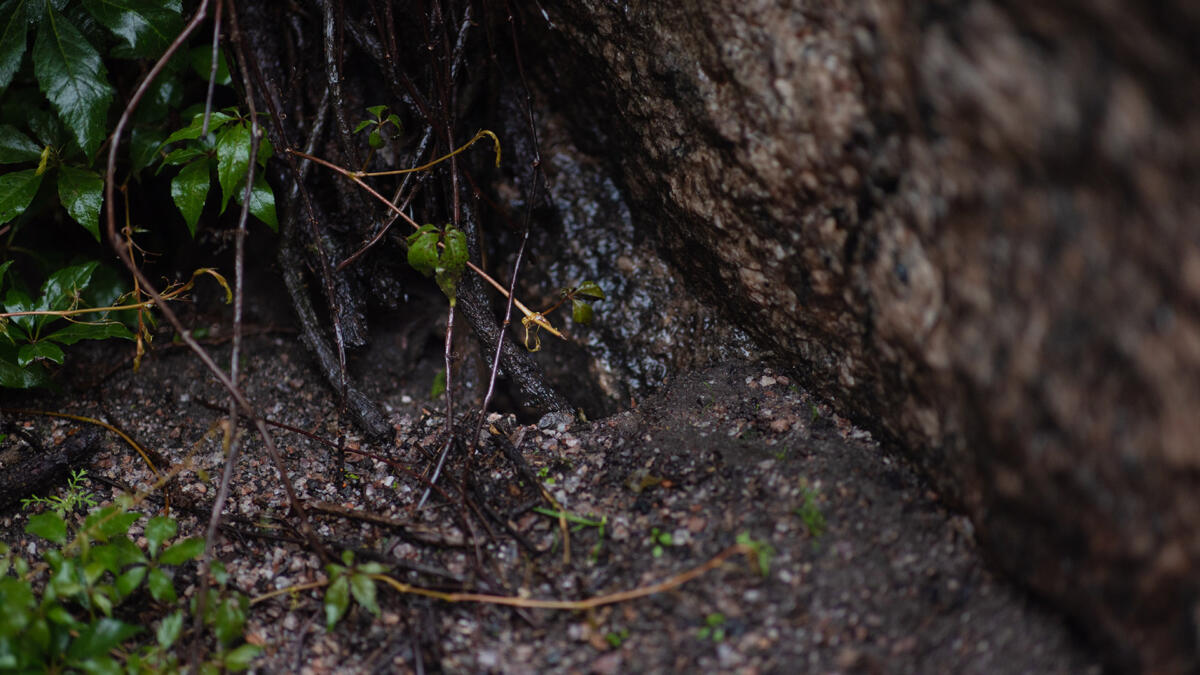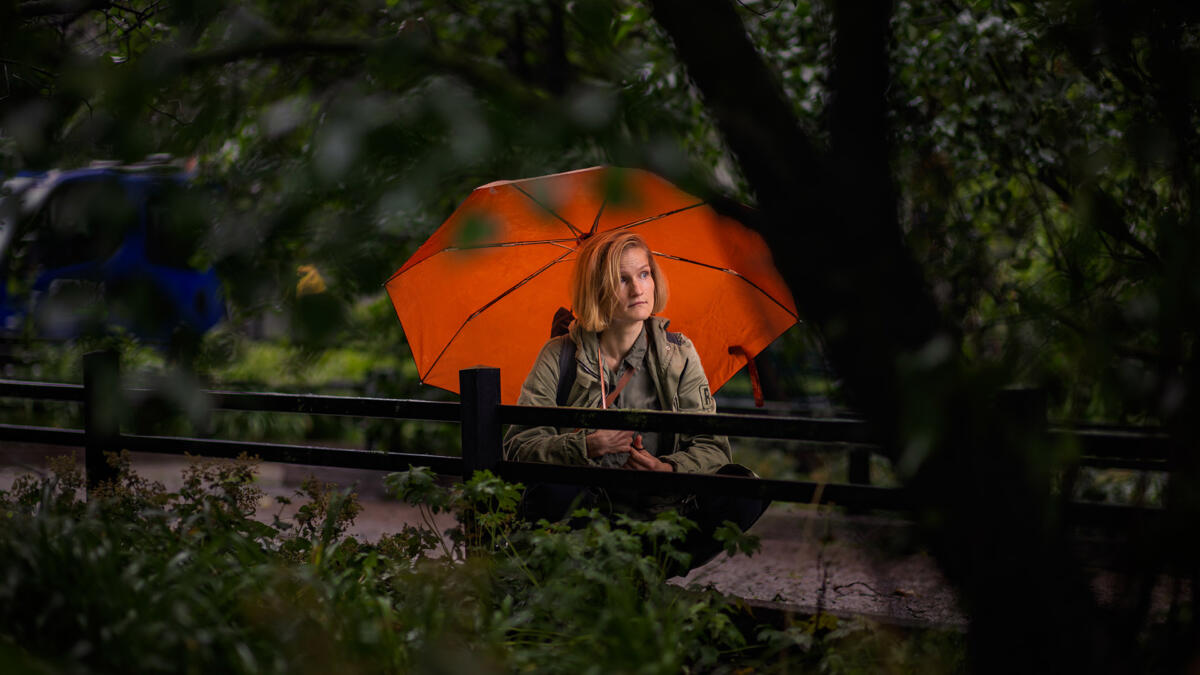“Can inter-species cooperation exist?” asks a performance pondering on the relationship between humans and rats
Maija Linturi is interested in our relationship with animals that do not arouse our sympathy and with whom we only share spaces because we have to.

On a shadowy slope, right next to apartment blocks, there are small holes here and there, leading to the bowels of the earth. Hey, there’s a tiny trail from one hole towards the waste collection unit. And another trail. The trails reveal that there is a rat colony living on the slope.
“As you become more accustomed to looking, you can often spot signs of rats in the city. We live in closer contact with these rodents than you would think”, says Maija Linturi.
Linturi, a student in the Master’s Degree Programme in Live Art and Performance Studies (LAPS) at Uniarts Helsinki, deals with the relationship between rats and people – two different species – in her nearly completed thesis. “Can there be cooperation between rats and people?” asks the Rat City performance piece, which is under construction in Myllypuro, Helsinki, in the surroundings of a towering landfill. The performance is a co-production between the Theatre Academy and Mad House Helsinki.
Art and science
Rat City was inspired by a surprising encounter a year and a half ago. Maija Linturi was walking towards Hakaniemi from the university in the middle of the day, when she suddenly noticed a rat pressing itself against the stone base of a building.
“I felt puzzled and stopped to stare at the rat. Apparently, it was threatened by my staring and started scurrying straight towards me. I think I must have screamed and jumped up in the air. After initial confusion, I looked around to see if the rat was still there, but it had disappeared. The encounter impressed me. The rat knew how I would react. It was streetwise in a different way from me.”
(Story continues after the image.)

Even before her encounter with the wise rat, Linturi had been pondering on the relationship between different species. She was particularly interested in the relationship between humans and animals that do not arouse our sympathy and with whom we only share spaces because we have to.
The encounter made Linturi explore rats and their world in more detail. She had found a topic for her thesis.
She started the work by collecting data. Linturi contacted the multidisciplinary Helsinki Urban Rat Project operating under the auspices of the University of Helsinki. The group examines the lives of rats in Helsinki from many different perspectives.
“I was welcomed immediately. As I watched the group at work, I was impressed by how people in totally different fields stimulate each other’s thinking. I got an enormous amount of information from the group. It feels like I’ve been on the receiving end in this cooperation”, Linturi says.
Linturi worked in close cooperation with psychologist Karolina Lukasik, who studies the relationship between different species in allotment gardens. Linturi interviewed gardeners with Lukasik and watched nocturnal visits to the allotments, recorded by hunting cameras.
“Working together was rewarding. As a performance artist, Maija paid attention to things that I would not have thought of myself. Maija noted, for example, the interesting soundscapes. What kind of sound is generated when a rat eats a seed?” Lukasik says.
Work in the allotment gardens opened Linturi’s eyes to how much we communicate with other species, including rats, either consciously or unconsciously. Mesh-covered ventilation holes in the stone base of a cottage inform rats that the location is not intended for them. An open compost, on the other hand, is an invitation to a feast. A trap is a direct death threat.
“This kind of contradictory communication confuses animals. Messages should be consistent and we should create some kind of rules for inter-species communication. As long as the message is unclear, animals will go to places where we do not want them”, Lukasik sums up.
The shared history of the city and rats
For her work, Linturi has interviewed people who have been involved with rats in their work. The majority of the interviewees have been researchers.
The audience can listen to the interviews from the speakers set up at the landfill in Myllypuro.
“You cannot listen to all the interviews from beginning to end during the performance. The idea is that people can choose what to listen to and for how long”, Linturi explains.
(Story continues after the image.)

In addition to Linturi, a number of artists from different fields are involved in creating the performance: sound designers, a musician, a visual artist and a theatre pedagogue.
Linturi emphasises that the venue is an integral part of the performance. The landfill rises to great heights in place of the old open-air dump.
Before being used as a dump site, the plot served as a gravel pit, from where truckloads of soil were transported to the roadwork sites of the ever-expanding Helsinki. As the population increased, the pit served as an open dump, which was like paradise for rats. But the rodents had to move out of the way of people – land was needed for new apartments. At the end of the 1990s, the area was deserted again when it became clear that chemicals left in the soil by the dump site increased the risk of cancer in residents. This time, people got the marching orders instead of rats.
“This place intertwines the gradual growth of Helsinki and the history of rats. On the other hand, the landfill does not guide the interpretation. If I took the viewers on a tour to places favoured by rats, I might strengthen their deep-rooted views,” Linturi points out.
Space for reflection
“I don’t want to preach to people with my work, from the top down, and tell them what they should think. Rather, I want to offer people opportunities and places for reflection.”
This is how Linturi answers when asked what she wants to achieve with her work.
Her own relationship with rats has changed during the project. While previously she did not really have a relationship with them, she now feels that she understands rats at some level, and why they behave the way they do.
Linturi is still invested in the subject of cooperation between rats and people, and of sharing spaces with rats.
“Perhaps cooperation means, for example, that some of the waste we want to get rid of serves as food for rats. In a way, they take care of waste management,” Linturi says.
Text: Anu Vallinkoski
Images: Eeva Anundi